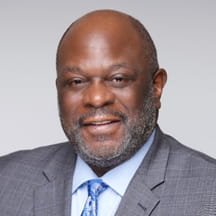As children’s hospitals around the country expand their efforts to create more diverse, inclusive and equitable (DEI) organizations, the effects are far reaching. Whether it’s on the frontlines of care, within quality improvement or employee benefit plans, DEI requires an extensive approach.
As Ann & Robert H. Lurie Children’s Hospital of Chicago commits to confronting racism, part of this includes evaluating their benefits through a lens focused on diversity, equity and inclusion.
“This is a gradual evolution in how we assess and manage our benefit offerings, as the organization as a whole takes a more active look at equity, diversity and inclusion,” says Cathy Brady, director, Total Rewards at Lurie Children’s. “This includes targeted, robust education, training, and awareness spreading across the culture and all of the different elements of the employment experience, as well as the care we provide to patients and families in the community.”
Challenges
The effort to build a more inclusive workforce and equitable benefit program follows an intersectional approach with considerations for, but not limited to, race, ethnicity, the LGBTQ+ community, veteran status, people with disabilities, age and socioeconomic status. The primary challenge is to consider every aspect of the benefits, regarding the large staff population and wide array of diverse backgrounds. To overcome this challenge, Lurie Children’s focused on three priorities.
- Supporting all unique employee needs. Attend to the health needs of all employees, enhancing their health and productivity and providing support for the social needs of all.
- Ensuring that benefits are inclusive. Across all benefit programs, the design, policies and experience are intentionally inclusive of all employees and all family structures.
- Aligning benefits with broader strategy. Take action to show that benefits support a diverse workforce, foster inclusiveness among all employees and contribute to broader diversity, equity and inclusion goals.
Solutions and strategies
With those considerations as the foundation for a plan to evolve benefits offerings, Lurie Children’s set out to identify areas where they could make an immediate impact. “We started by identifying any low-hanging fruit,” says Brady. “That included a basic review of existing benefit plans and considering where we could expand coverage for services like gender affirmation and other things that aren't standard on some plans.”
In addition to expanding coverage for specific services, Lurie Children’s has also:
- Introduced Rethink Benefits, a service for employees who have the added responsibility of caring for family members with developmental disabilities.
- Expanded infertility coverage beyond the traditional medical definition of infertility to help LGBTQ+ families plan for their future.
- Removed eligibility based on gender in parental leave plans and policies.
Another area of immediate opportunity was a closer examination of retirement benefit offerings. The HR team reviewed data and analytics within the retirement plans with consideration for various personas across the organization to help understand different segments, their saving patterns and trends. This provided context for the organization in terms of participant retirement planning and where to target certain education and learning opportunities concerning financial wellness.
Seeing results
To measure the effectiveness and success of this effort, Lurie Children’s is monitoring results both informally and through engagement survey feedback to assess their progress in this effort.
While focusing on health plan and retirement is a start, the organization’s work to evaluate the equity of its benefits will be ongoing. “There’s still certainly more to do, but we're proud of the work we’ve done on a number of fronts,” says Brady.
Regarding next steps, Lurie Children’s intends to explore student loan services, domestic partner benefits coverage, income based premium structures and more. “From here we continue to look at new and additional benefits and ask, ‘Where are the gaps?’” says Brady. “We want to continue to add to or enhance benefits with new programs and offerings that that might provide the broad support needed for our diverse workforce.”



